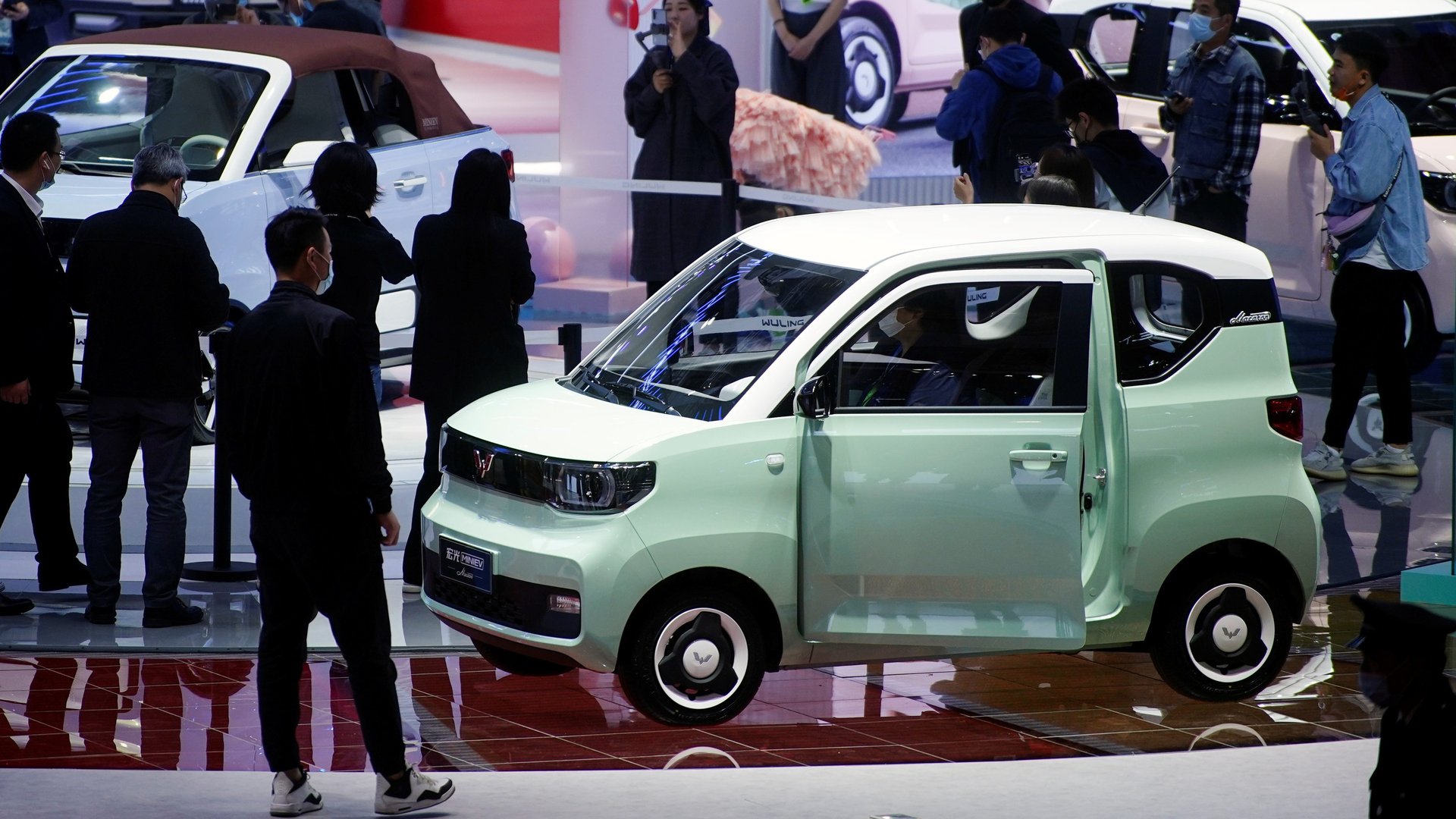A $4,400 electric car is outselling Tesla in China
The Hong Guang Mini is a small, boxy electric car. A far cry from the sleek, speedy machines from prestige EV companies, it offers a low-key cuteness at a low-key price. And that has been the secret of its success.


The Hong Guang Mini is a small, boxy electric car. A far cry from the sleek, speedy machines from prestige EV companies, it offers a low-key cuteness at a low-key price. And that has been the secret of its success.
Just weeks after its launch at the end of July, the low-speed pure electric EV began outselling Tesla in China. Some 14,495 units of the car were sold in September, according to the Sweden-based EV-Volumes global sales database. For the same month Tesla sold 11,329 cars, mainly Model 3s, according to the China Passenger Car Association. (No single source reports entirely comparable monthly figures for both the car makers’ models.)
The gap continued in the following months and appears to have widened this year, with 36,760 of the Mini EV sold in January, according to EV-Volumes data, while that month Tesla sold 14,554 Model 3’s in China (and 16,521 cars overall), according to the CPCA. In 2021 so far, the mini car may even be the world’s best-selling EV, given China’s the world’s largest EV market.
Chris Jones, chief automotive analyst at industry analyst firm Canalys, described China’s EV market last year as a tale of two cars—Tesla’s made-in China Model 3 dominated in the first half of the year, while the Hong Guang Mini was “the market leader in the second half of 2020.”
“Launching a new car in 2020, during a pandemic with travel restrictions in place and more people working from home was a risk,” added Jones via email. “However, at the low price, the Hongguang Mini becomes a very convenient, inexpensive way to get around. A safe, clean space away from public transport or shared urban vehicles.”
Calling out to Generation Z
Developed by SAIC-GM-Wuling Automobile, a joint venture between state-run car giant SAIC, General Motors, and Guangxi Automobile (formerly Wuling Motors), the car sells for 28,800 yuan (about $4,400), with some newer models costing a bit more—making it the perfect car for China’s eco-conscious but cash-strapped Gen Z buyers.
Despite the car’s size and price tag, the company’s efforts to position it as a fashionable item, rather than merely a practical transportation tool, appear to have been successful with younger buyers. According to the company, more than 70% of its buyers were born after 1990, while at least 60% were women. On Chinese social media, including Weibo and lifestyle app Xiaohongshu, topics related to modifying the interior and exterior of the cars to make them trendier have been viewed tens of millions of times.
For years, small, low-speed EVs in China were used mostly by the elderly, often in rural areas, looking for value for money. In some cases the vehicles were best suited to private communities, and not roadworthy, unlike the Mini EV. But through a series of marketing events, the company managed to transform that image. In March, the company held a party for owners of the Mini EV in Shanghai, where hundreds of user-modified vehicles were put on display.
This month, it also rolled out a new model under the Mini EV series named “macaron,” based on the models’ bright colors inspired by the French confectionary. The macaron series has a starting price of 36,800 yuan ($5,675). And there’s also a convertible model.
To date more than 200,000 of the cars have been sold—a striking figure when you consider Tesla delivered about half a million cars globally in 2020.
A rising EV tide
Despite some glee in auto industry reports over the Mini’s sales figures vis-a-vis Tesla, SAIC-GM-Wuling’s success doesn’t come at the cost of the US company, since the Minis are aimed largely at buyers who probably couldn’t have afforded a Tesla anyway.
Expanding the universe of people who can consider buying an EV car can only be a good thing for the industry in China—and elsewhere.
“The Mini greatly expands the awareness of EVs in China, and will have a knock-on effect in other countries as similar city EVs launch,” said Jones, of Canalys.